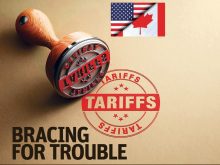Beef imports from the United Kingdom to Canada have grown more than 10 percent since a trade deal was ratified in September of 2017.
While the Canada-European Union Comprehensive Economic and Trade Agreement granted Canada significant new beef and veal market access to the EU, business has been both ways.
For the 12-month period from October of 2017, the first full month CETA was in effect, until Sept. 30, U.K. beef exports to Canada were up 23 percent in terms of volume and up 45 percent in terms of value. Various types of beef make up the product mix but most was offal, said a spokesperson with Agriculture Canada.
Read Also

Manitoba extends Crown land rent freeze
Manitoba government links the continued rental rate freeze on grazing and forage leases to economic and environmental challenges facing the industry
The U.K. won approval for the export of manufacturing beef to Canada at the start of 2018 and sales have been growing.
Regular shipments to Europe from Canada have started. Canada’s total beef exports to the EU were up four percent from October 2017 to the following Sept. 30. Trade with the U.K. was healthier.
Cattle supply is the biggest constraint right now because there are not enough eligible animals raised without added growth hormones.
“The real push is to get more cattle ready for that market,” said David Haywood-Farmer, president of the Canadian Cattlemen’s Association.
Market access and technical barriers continue on this side, he said at the Alberta Beef Producers annual meeting in Calgary held last fall.
European authorities continue to review food safety treatments used in Canadian packing plants to curb E. coli and other pathogens. Some large companies have said they are not going to pursue the EU market until this is resolved, but smaller facilities have made inroads, said Haywood-Farmer.
Meanwhile, the U.K. continues to wade through its decision to leave the EU by next March. Once that happens a bilateral agreement is possible.
European beef and pork are also arriving from other member states.
Poland, Germany and Denmark were shipping pork to Canada, while Ireland and the Netherlands surpassed the U.K. in terms of beef exports, according to Statistics Canada. The Netherlands is shipping veal to Canada every month.
Canada’s pork exports have been a slow start, said Gary Stordy of the Canadian Pork Council. Entering the EU would require products that are uniquely Canadian because the market is well supplied with fresh European pork.
“It will be a product that has a Canadian brand. We are not going to go pork chop for pork chop,” he said.
Technical barriers are somewhat easier than beef faces but could still add some costs. Canadian processors use certain products to assist with food safety but if the Europeans want something else, that can be obliged, he said.















